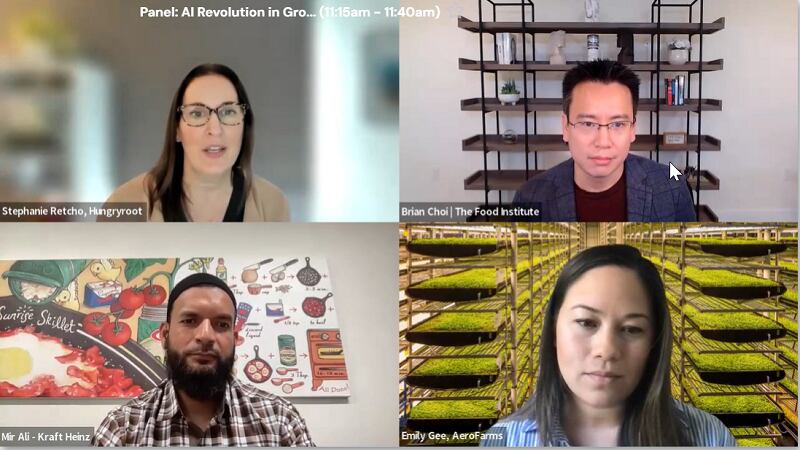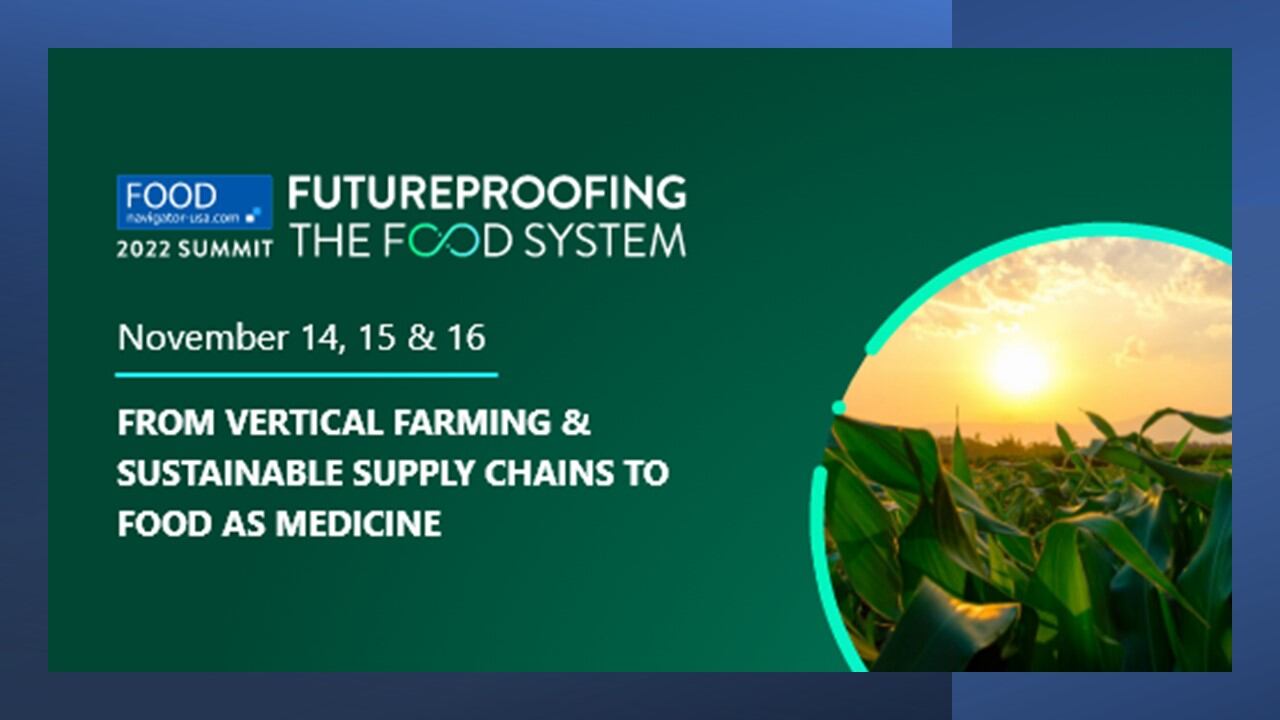On the first day of Futureproofing the Food System this week, innovators and thought leaders discussed how AI can revolutionize businesses’ efficiency and innovation through data that reflects what they need to evolve in an increasingly competitive and complex landscape. Watch on-demand here.
Using AI to validate ingredients, sources and efficacy
Through AI, the industry has access to bioactives that are “critical for maintaining health, that are still a mystery for science,” Sofia Elizondo, co-founder and COO, Brightseed, explained during the panel.
Brightseed’s Bio Gut Fiber bioactive ingredient was found through its proprietary AI-driven platform, Forager, and exhibits properties that strengthen the gut lining. Forager also identified a viable source, hemp hulls, creating a new supply chain for the upcycled material.
“Science has known for a long time that leading a life that contains a diet full of plants, nuts, seeds, legumes and vegetables leads to a long and healthy life. What we don’t know is what is in those materials, in those raw sources that mechanistically at a molecular level, lead to health,” she said.
Forager’s capabilities “illuminate this dark space” to identify small molecules responsible for improving human health and accelerating the Food as Medicine resurgence.
“We find those things that make food as medicine. So the reason we need AI to do this is because…there isn’t a microscope that is powerful enough to see these molecules inside the things we eat,” she explained.
Brightseed layers the data from its custom mass spectrometers with predictive algorithms to identify plant structures and then use AI to predict its effects on health. The company trains its machine learning models “with decades of biomedical literature” to ensure the ingredient is effective.
Using AI to validate ingredients, sources and efficacy are essential in NotCo’s development for plant-based ingredients that are nearly identical to its animal-based counterpart.
“There are many underlying patterns in molecular structures of flavors and other incredible molecules that explain why we like the things we like,” Mattias Muchnick, CEO, NotCo, said.
To replicate the organoleptic characteristics of meat and dairy products, NotCo’s AI platform identifies plant-based combinations that meet those criteria while considering scalability and downstream supply.
“For us, it’s been incredibly important to work upstream to create incredible products, but at the same time, work together with the ingredient suppliers to generate interest that we need in order to make sure that those ingredients that we created are scaled right,” he said.
Muchnick continued, “Our AI is … understanding the underlying patterns between molecular components in food and the human perception of these textures and colors. Once you … train an algorithm enough, [it] starts bringing … tastes that you would never imagine.”
Understanding how to identify and leverage useful data into an efficient and predictive algorithm is critical, and often a challenge for brands that already have decades of data—but an area of opportunity for larger companies to invest in.
“Your AI is going to be as good as your data … You have to spend years curating what they’ve done in order for that data to be valuable, if it is [even] valuable,” Muchnick said.
Extracting insights from business touchpoints to fine tune marketing initiatives
From a marketing perspective, businesses often have “data about their customers that live in disjointed, fragmented areas,” Nick Markman, senior product manager, Evocalize, added.
Referring to touchpoints like transaction-oriented data and social media and email engagements, Markman explained that that AI will extract insights from those different areas of the business to help provide a clearer picture of how a business can fine tune its personalization tactics and marketing initiatives.
“If you’re able to have the data on your customer holistically, what they’re doing with your business at what times, what they’re buying, how they’re interacting with you … it really helps segment and refine and understand various profiles to help with your marketing initiatives,” he elaborated.
Training AI from consumption data for supply chain management
Manish Ghosh, VP strategy and consumer industries, Blue Yonder, explained that AI is opening a new frontier for the food and beverage industry, as it allows companies to gain market share by ensuring that their products are always available to customers.
While data quality and availability are critical for supply chain management, Blue Yonder relies heavily on data from use cases to train its AI models—including demand forecasting, inventory planning and management, route planning, logistics management and transportation, among others.
The CPG sector sees disturbances more quickly than others “because it’s all consumer-centric” and the perishability of inventory that prevents product from staying too long on the shelf.
“So the supply chain is really exposed when it comes to [CPGs], hence having the generative AI … to look for answers which you would not know otherwise in terms of disruptions [along] the supply chain.”
“For us, it’s always very interesting to go to the customers and keep looking for new use cases which differentiates them in the marketplace,” Ghosh said.
As a result of segmented customer preferences, first-generation use cases were focused on the demand side, Ghosh explained. Today, the focus is on the supply side, with an emphasis on on-shelf availability and consumption data that reflects market share.
“If you don’t have the right product at the right place with the right pack size, even if you have it sitting in the warehouse or in a different store in a different pack size, it doesn’t matter. That’s the moment of truth … that’s where we saw a lot of innovation to ask on the AI—Could we really predict what is the pack size? What is the buying pattern? So it’s more on the basis of consumption [than] the basis of shipment,” Ghosh explained.
By combining these touchpoints of data, “then we take the forecasting process and the on-shelf availability to a different level altogether,” which also includes considering external factors like geopolitical challenges and climate, he said.
“…AI is working almost like a co-pilot. Now AI is starting to come up with interesting answers, saying ‘Here is the next [problem] coming in.’ And if that [problem] comes up, here are five ways to deal with it … and if you run them here is the cost of the first one versus the cost of the second one.”
Register for free to watch this session and other Futureproofing the Food System sessions on demand. The recording of this presentation will be available for three months after Nov. 14.





